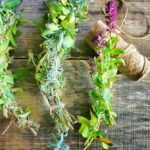How to Use Annatto
Bixa orellano of Bixaceae
Did you know there is a natural food dye that is still being used commercial to color food? A plant based dye that still has use even among the intense competition of dye synthetics! Gives another basis to the phrase, “tried and true”.
Annatto is the grain or excerpt of the achiote tree. The fruit of the achiote tree is heart shaped and covered with spiky thick hairs. Originally native to central and south America, this herb is widely used in Latin America as a dye, therapeutic herb, and a fringe benefit in culinary recipes. Annatto can be turned into an intense dye with color scopes from bright yellow to deep orange. The seeds and flesh are refined to extract this succulent dye. Countless commercialize food commodities apply annatto for solid color. Annatto is also known as bija, jarak belanda, roucou, karangaram and achiote. Annatto is also named the “poor man’s saffron” because of its dazzling red color.
This wonder seed acts as an antioxidant in foods it is enriched with as well. It contains tocotrienols, a substance that has the same effect as Vitamin E in the human body. Due to this, it can be considered an anti-aging solution as well by tightening your skin and helping to reduce wrinkles. Learn more about Annatto and its astonishing benefits.
History
The scientific species name Orellano came from the name of a Spanish explorer of the 16th century Francisco de Orellana (1511-1546). He had taken part in a diverse quest of the New World during the European colonization era. Francisco had been further involved in the eradication of the Inca Empire as well. In 1540, he was engaged in another exploration managed by Gonzalo Pizarro y Alonzo. It is on these expeditions that Orellana learned of and discovered the use of annatto by natives to the South American region. Throughout the 16th century, annatto pigment was a valuable item of trade and exchange, and was exported to Europe in 1967. The English named it “lipstick tree” for the cosmetic purposes of annatto. Using the herb’s dye for cosmetic products has become an old practice in comparison to more modern compounds found, however, the pre-columbian Aztecs used this herb for ritual body paint.
From venerable times, annatto was used by Caribbean and South American cultures. It is also found used in Brazilian as well as Caribbean and Latin American cooking with it being the fruit of achiote trees of tropical regions. It is composed of a reddish pulp which envelopes the fruit’s seeds. Frequently used in rice, butter, cheese, margarine, mustard oil and smoked fish, this herb’s nutritional and culinary cosmetic properties make it versatile. Many Central and South American people still use the seeds for body paint and lipstick, too, although not commercially as much as before. The use of this natural dye not only serves the purpose of body paint, but also as protection against jungle insects and to cure surface wounds. The full plant was used in Suriname to alleviate fever, dysentery and nausea. More traditional healers in Columbia use this spiky red fruit to treat snake bites as well.
Taxonomy
Kingdom: Plantae
Clade: Angiosperms
Clade Eudicots
Clade Rosids
Order: Malvales
Family: Bixaceae
Genus: Bixa
Species: B. Orellana
Binomial Name: Bixa orellana
Lore
The native people of South America used annatto to produce a dye for many purposes, particularly for body paint to block evil spirits as well as human enemies. According to the region’s folk stories, Gonzalo Pizarro y Alonzo returned from a quest to Peru along with his brother Francisco de Orellana and about 2,000 soldiers. Gonzales found a false myth of cinnamon trees growing abundantly in the Amazon jungle. He left his brother with Incas seek to pursue finding this grove as cinnamon spice was quite a high commodity in those times. The cinnamon trees remained fleeting despite his search. During his interactions with natives, the Peruvian allegedly “gifted” the Incas with the deadly smallpox virus and a large number of their population mostly died unfortunately in the Amazon jungle. Pizzaro ultimately felt compelled to leave his ill-gotten journey, but the desire to find cinnamon eventually lead to the discovery of annatto berries along the route to leave. Using these fruits, he supposedly managed to escape out of the Amazon river.
Medicinal:
Annatto is used to relieve fevers, kidney disease, and dysentery. By consuming the herb’s seeds, you can relieve stomach upset. It is also jam packed with fiber to stimulate smooth bowel movements. Similarly, its digestive soothing effects can relive heartburn. In India and in South America, the herb is being used as an insect repellent as well. It also has been said to help in lowering blood pressure and cholesterol. In addition, it helps to improve digestion, manage diabetes, aid in maintaining healthy bones, and even in treating gonorrhea. Oil from the plant is known to protect against ultraviolet rays. It is beneficial in reducing signs of aging as mentioned above as it contains tocotrienols, a substance with the same effect as vitamin E in capturing free radical molecules within the body. In addition, this herb’s seeds have a high content of calcium making it a beneficial supplement. By making a paste out of the seed powder, you can administer the paste to skin irritations like burns and wounds. It quickens the healing process and diminishes any scar appearance.
Culinary
The seed is a conventional ingredient to flavor and color a variety of South American dishes. It is very prominent in inclusion to some of the popular stews, soups, and rice cuisine. In the United States , annatto seed is categorized as a food and color preservative (E number E160b) and is used as a natural food color in cheese, margarine, and butter.
Spiritual
American hoodoo practices encourage annatto seed to be mixed with war water to block any harm that comes to you or your family. Sprinkle annatto seeds in the four corners of your home to secure your home when you leave to guarantee that your house will be protected. It is also known to help remove curses.
Growing tips
Annatto grows generally in tropical and subtropical parts of the world for it requires a steady amount of rain. The suited cultivation months are July and August for those climates. Parts that are useful include seeds, roots, shoots, and leaves. It grows above 4.5 degrees Celsius in full sun to partial shade. Growing soil should be well-drained, and generally it is good to grow using woody stem cuttings, or direct sow outdoors in fall. To preserve seeds, place the seeds in a cool dry place. To harvest annatto, bag the seed heads to catch ripening seeds. Allow the seed heads to dry on the plants themselves; subsequently, you can then remove and gather the seeds once they have dried.
Word of Caution:
Annatto is not known to produce allergic reactions. Nonetheless, it should be recognized that the commercial food coloring produced from the seed shell is the only food additive known to produce many of the same allergic reactions that correlates with artificial preservatives and colorings. Persons who are sensitive to artificial coloring may have sensitivity to annatto even though it is plant based.
Final Note
Fun fact about this herb – it has been used for a wide range of cosmetic purposes, from war paint and ritualistic body paint to lipstick. Now that we have gone over the many different uses for the seeds and fruit of the achiote tree, how about using some of this natural dye yourself? Check out how cheese gets its dye from annatto being used on commercial large scale production here:
Check out Eupterra Foundation’s main page for more informative reading and subscribe to our newsletter to get more herblore.
~~~
Works Cited
Moreira, Priscila Ambrósio, et al. “The Domestication of Annatto (Bixa Orellana) from Bixa Urucurana in Amazonia.” Economic Botany, vol. 69, no. 2, 2015, pp. 127–135., doi:10.1007/s12231-015-9304-0.
“Annatto.” Wikipedia, Wikimedia Foundation, 6 Mar. 2018, en.wikipedia.org/wiki/Annatto.
“Annatto.” Herbal Encyclopedia, 5 Dec. 2010, www.cloverleaffarmherbs.com/annatto/.
“Achiote/Annatto Benefits & Information.” Herb Wisdom, www.herbwisdom.com/herb-achiote.html.








